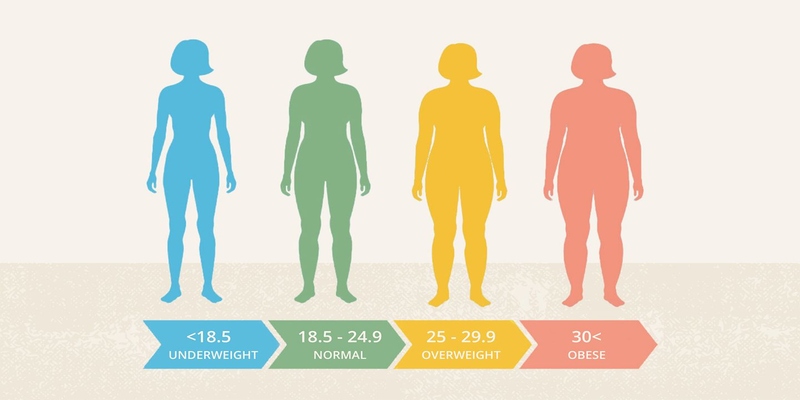Maintaining a healthy lifestyle is crucial in the fast-paced world of today. Incorporating high-fiber foods represents a key element of a balanced diet. These fiber-rich options not only contribute to successful weight management but also yield an array of health benefits, making them indispensable. Delving into the fiber-rich foods you can incorporate into your daily meals is our goal.
A Closer Look at The Basics of Fiber
Understanding the basics of fiber is essential before exploring specific foods. Fiber is a type of carbohydrate found in plant-based foods. However, unlike other carbohydrates, the body cannot digest it. Instead, because it remains relatively intact through your digestive system rather than being broken down for energy or stored as fat cells, this offers an array of health benefits.
Two main types of fiber exist including soluble and insoluble. Each type uniquely promotes digestive health. They play a vital role in maintaining optimal bodily functions.
Soluble Fiber - Supporting Heart Health
Foods such as oats, beans, and fruits contain soluble fiber that dissolves in water to form a gel-like substance. This particular type of fiber contributes significantly towards heart health by lowering cholesterol levels and stabilizing blood sugar.
Insoluble Fiber - Aiding Digestive Regularity
Whole grains, vegetables, and nuts contain insoluble fiber that not only adds bulk to the stool but also facilitates regular bowel movements. This promotes a healthy digestive system and mitigates constipation.
Fiber-Rich Foods You Can Add to Your Diet
Maintaining overall health pivots on dietary choices; for promoting well-being through nutrition, fiber-rich foods command the stage.
Fruits - Nature's Sweet Fiber Source
Not only do fruits tantalize your taste buds with their natural sweetness, but they also deliver a potent punch of fiber. Consider apples, pears, and berries. Beyond being delightful snacks, these choices significantly bolster your daily intake of dietary fibers.
The enchantment resides within the inherent blend of sugars and fiber found in such fruits. This creates a harmonious effect that hinders sugar absorption into your bloodstream. The gradual release of sugar ensures sustained energy levels, thus circumventing the spikes and crashes typically linked with refined sugars.
Furthermore, due to their fiber content, fruits bolster digestive health. Specifically, this aids in averting constipation while fostering a robust gut microbiome.
Vegetables - A Colorful Fiber Feast
Not only does the vibrant spectrum of vegetables offer visual appeal to your plate, but it also delivers a healthy dose of dietary fiber. Broccoli, carrots, and leafy greens are an array as colorful as it is nutritious.

The richness in nutrients that your body craves comes from these contributions not just for aesthetics in meals but also from their fibrous content. This is a crucial element found predominantly within plant-based diets. Maintaining digestive regularity is a crucial role played by fiber, specifically, preventing the stagnation of food in the digestive tract. This function underscores its importance.
Incorporating a variety of vegetables ensures a well-rounded, fiber-packed diet. This promotes optimal well-being. Moreover, the diverse array of vitamins, minerals, and antioxidants found in vegetables acts as a nutritional powerhouse that supports overall health.
Whole Grains - Elevating Nutrient Density
In the realm of grain consumption, transitioning from refined to whole grains revolutionizes not only flavor but also nutritional value. Quinoa, brown rice, and oats are diverse whole-grain options that can enhance your meals' texture and heartiness while dramatically increasing fiber intake.
Most nutrients, including fiber, are a significant component of whole grains. These concentrate within their retained outer bran and germ layers. Embracing whole grains enhances your diet's overall nutrient density by retaining these vital nutrients.
The fiber in whole grains promotes satiety, thus reducing overeating risks. It also offers a sustained energy release. Opt for whole grains to make flavorful choices that elevate the nutritional profile of your meals and foster a foundation rich in nutrients supporting optimal health and well-being.
In short, incorporate fiber-rich foods into your diet by embracing the natural goodness of fruits, exploring the colorful diversity offered by vegetables, and indulging in the wholesome richness provided through whole grains. These dietary choices go beyond mere sustenance, becoming a cornerstone of a lifestyle that promotes health and is dense with nutrients.
Incorporating Fiber-Rich Foods into Your Diet
After exploring the significance of fiber in your diet, we shall now delve into pragmatic methods for integrating fiber-rich foods into your daily meals. To create a diet that is simultaneously nutritious and satisfying requires a careful selection of ingredients, they must be high in fiber, versatile, and delicious.
Consider these easy, creative strategies to imbue everyday meals with an abundance of fibrous goodness.
1. Overnight Oats with Mixed Berries
Ingredients:
- 1/2 cup rolled oats
- 1/2 cup low-fat yogurt or milk (dairy or plant-based)
- 1 tablespoon chia seeds
- 1/2 cup mixed berries (strawberries, blueberries, raspberries)
- 1 tablespoon honey or maple syrup (optional)
- A sprinkle of chopped nuts (almonds, walnuts) for added crunch
Instructions:
- Combine rolled oats, yogurt or milk, chia seeds, and honey or maple syrup in a jar.
- Stir well and refrigerate overnight. In the morning, top with mixed berries and chopped nuts.
Not only does this fiber-packed breakfast satisfy your taste buds, but it also maintains your morning energy levels.
2. Quinoa Salad with Colorful Vegetables
Ingredients:
- 1 cup cooked quinoa
- 1 cup cherry tomatoes, halved
- 1 cucumber, diced
- 1 bell pepper, diced (any color)
- 1/4 cup red onion, finely chopped
- 1/4 cup feta cheese, crumbled
- 2 tablespoons olive oil
- 1 tablespoon balsamic vinegar
- Salt and pepper to taste
Instructions:
- In a large bowl, combine cooked quinoa, cherry tomatoes, cucumber, bell pepper, red onion, and feta cheese.
- In a small bowl, whisk together olive oil, balsamic vinegar, salt, and pepper.
- Drizzle the dressing over the salad and toss until well combined.

Quinoa salad is rich in fiber and it offers a refreshing and satisfying option for lunch.
3. Fiber-Packed Snack: Apple and Peanut Butter Stackers
Ingredients:
- 1 apple, cored and sliced into rings
- 2 tablespoons peanut butter (or almond butter)
- 2 tablespoons granola
- 1 tablespoon honey
Instructions:
- Spread peanut butter on apple slices
- Sprinkle each slice with granola.
- Stack the slices to create mini sandwiches.
- Drizzle with honey for a touch of sweetness.
Apple and peanut butter stackers offer a rapid, delightful snack. They provide an ideal equilibrium of fiber, protein, and the inherent sweetness found in nature.
Experiment with incorporating fiber-rich foods into your daily meals. Not only will these meals be delicious, but they will also yield a satisfying positive impact on your health and well-being.
Conclusion
Conclusively, incorporating high-fiber foods into your diet constitutes a fundamental stride towards the achievement and sustenance of a healthy lifestyle. You can bolster digestive health and enhance overall well-being by comprehending fiber's role and making educated decisions about its consumption.
Choose nutrient-dense options to elevate your diet; embark on an exhilarating journey towards becoming a healthier, more vibrant version of yourself.






